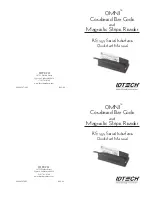
17
English
FZ409
USB Operations
USB memory device operation
About USB memory
USB is an acronym for Universal Serial Bus, and
refers to an external bus standard supporting
data transfer rates of 12 Mbps.
This unit is compatible with USB 1.1/2.0 with
maximum data transfer rates of 12 Mbps.
USB memory devices that can be played by
connecting to the unit’s USB cable are limited
to those recognized as “
USB mass storage
class devices
”; operation is not guaranteed
with all USB memory devices.
∗
Devices compatible with “
USB Mass Storage
Class
” can be used merely by connecting to the
host device, without need for special drivers or
application software.
Consult the manufacturer of your USB memory
device for information regarding whether it
is supported by “
USB Mass Storage Class
”
standards.
Audio files playable on this unit are limited to
MP3/WMA/AAC files.
To prevent the accidental loss of data, always
back up important data on your computer.
This unit does not support connections to a com-
puter. In addition, connections made through a
USB hub device are also not supported.
When a USB memory device is composed of
two or more drives, only one of the drives will
be detected.
USB memory devices with security functions
cannot be played.
The order in which tracks are recorded may dif-
fer depending on the USB memory device con-
nected (the actual playback order may not be
the same as that indicated on your computer’s
display).
If you continuously operate folder up/down, the
play time keeps as “
00:00
”, and the sound is
not emitted.
What is MP3?
MP3 is an audio compression method and clas-
sified into audio layer 3 of MPEG standards. This
audio compression method has penetrated into
PC users and become a standard format. This
MP3 features the original audio data compres-
sion to about 10 percent of its initial size with a
high sound quality. This means that several mu-
sic CDs can be recorded on a USB memory de-
vice to allow a long listening time
∗
.
∗
Depends on the USB memory device storage
capacity.
To disable DRM
(Digital Rights Management)
1. When using Windows Media Player 9/10/11,
click on TOOL OPTIONS MUSIC RE-
CORD tab, then under Recording settings, un-
click the check box for RECORD PROTECTED
MUSIC. Then, reconstruct files.
Personally constructed WMA files are used at
your own responsibility.
What is WMA?
WMA is the abbreviation of Windows Media Au-
dio, an audio file format developed by Microsoft
Corporation.
Notes:
If you play a file with DRM (Digital Rights Manage-
ment) for WMA remaining ON, no audio is output
(The “
--:--
” and indicator blinks for 5 seconds
and go to next track).
Windows Media
TM
, and the Windows
®
logo are
trademarks, or registered trademarks of Microsoft
Corporation in the United States and/or other
countries.
What is AAC?
AAC is an acronym for “
Advanced Audio
Coding
” and refers to the audio compression
method used with video compression standards
MPEG-2 and MPEG-4.
AAC files composed with the following condi-
tions can be played:
AAC files encoded with iTunes.
iTunes Ver. 7.0 or earlier.
File extension “
.m4a
” (“
.M4A
”)
















































